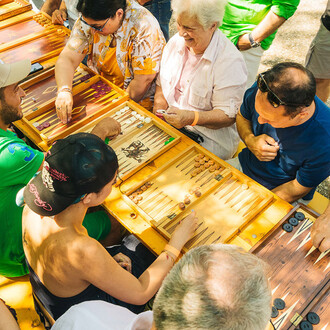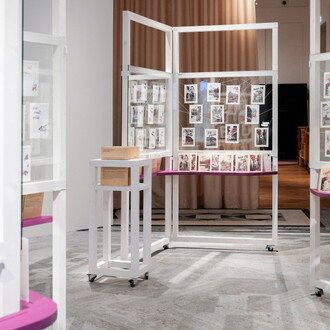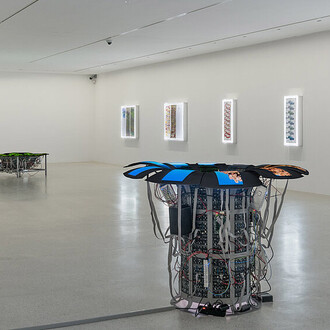Erwin Wurm (* 1954 Bruck/Mur) is one of today’s most successful and best-known international contemporary artists. On the occasion of his 70th birthday, Albertina Modern presents the first comprehensive retrospective of his multifaceted work which invites us in sculptures, drawings and instructions, videos and photographs to contemplate the paradoxes and absurdities of our world.
In his artistic method, Erwin Wurm examines the concept of the sculptural, introducing it as a yardstick by which to gauge our contemporary world. The boundaries between traditional concepts of sculpture, performance, photography or painting are called into question, just as statics and movement within a work of art are redefined. Wurm overturns the habitual perception of the reality that surrounds us and, with his artworks, opens up opportunities to raise new perspectives and questions: What happens if I disregard gravity, what if houses start melting away or are squashed by performative interventions? How do bodies and spaces behave when the absurd and paradoxical has room to exist in them? How can you, in the One minute sculptures, become part of a work of art for a brief moment, and how does that feel? As the artist himself explains, it is always about the concept of the sculptural in relation to the social. For example, a pickle may well be declared to be a self-portrait, or a lavish luxury convertible like the Fat car as a symbol of greed, excess, and commodity fetishism in our society. On the other hand, the Narrow house conceptually reflects the narrowness of bourgeois thinking and action and the restrictiveness of social norms, whether through religion, convention, or faux pathos. Relating to this, the show for the first time presents rural School, which stands for restrictive and now outdated ideas and is another symbol of restrictive and judgmental models of thought.
Erwin Wurm stays committed to working innovatively with the sculptural parameters of hull, mass, skin, volume, and time in his new works: In the Substitutes, for example, the body disappears, and the clothes remain behind as a ghostly relic, like a phantom. The Skins show only narrow corporeal ribbons, which—like spatial drawings—become the echo of a sculptural movement. In the Flat sculptures, on the other hand, flattened sprawling letters conquer the three-dimensional canvas, making the words they shape hard to read. In these works, Wurm, who once wanted to become a painter, continues his ongoing exploration of color and language but, as the series title suggests, still breaks with tradition by making a painting a spatial, rather than a two-dimensional, experience. Wurm’s work illustrates how much it is about discovery, about continually rethinking and redesigning what already exists.
The exhibition brings together major works from all stages of Erwin Wurm’s art career. From his early wood and dust sculptures to his most recent works, some of which are being shown for the first time in this exhibition. Juxtaposed with these are works that earned him his international fame, like the One minute sculptures, the Fat car, and a Narrow house.
















